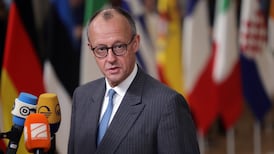The mysterious apparent sabotage of the Nord Stream pipelines that link Europe to Russia’s gasfields has raised fears across the continent over what other critical infrastructure could be at risk.
Before the Nord Stream incidents had even occurred, Norway’s petroleum safety authority had on Monday issued a warning about “unidentified drones/aircraft” flying close to the country’s offshore oil and gas platforms. It warned operators to be vigilant, and of the risk of accidents or “deliberate attacks”.
The timing of the pipeline damage is significant, coinciding with the launch of a new Baltic pipe linking Poland to Norwegian gas via Denmark, in what national leaders had celebrated as a step away from dependence on Russia for energy.
Western leaders have carefully avoided suggesting any attribution for the apparent attacks, and there have been some suggestions that it may never be possible to definitively prove responsibility.
Living in a mould-covered garden studio: ‘Christmas is going to be miserable’
Paul Mescal and Jessie Buckley: ‘There was an undeniable energy and chemistry between us’
Is Strictly Come Dancing nearing its last waltz?
2025 in Irish politics: A messy Dáil start, more housing woes and, finally, a new president
This kind of ambiguity is a feature of the mystery critical infrastructure attacks that have been an increasing international trend in recent years. This is part of the hybrid warfare toolkit: attacks that seek to heighten a sense of insecurity and influence the decision-making of the target, all the while skirting just below the threshold of detection, attribution and the level of severity that could trigger a retaliation.
A determining factor in where such attacks are targeted is vulnerability. It is natural enough, therefore, for attention to return to the undersea cables that carry data and communications across the Atlantic ocean and run off Ireland’s coast, which we at present have little capacity to monitor and guard.
The world’s roughly 400 submarine cables are the arteries of the digital era. This is how we access internet services hosted elsewhere, perform international financial transactions and stream the latest episode of the must-watch series.
They have increased in importance alongside the growth in video streaming and cloud services. When you access your saved online documents, they may well be being beamed on to your screen via a fibre-optic cable about the width of a garden hose lying deep in the Atlantic.
Physically, these cables are vulnerable: they are sometimes accidentally snapped by fishing boats.
About 16 of them run along the coast of Ireland — home to the European headquarters of the major international tech companies and a fulcrum of transatlantic communications infrastructure since the establishment of the first transatlantic cable from Valentia island in 1866.
Investigation of the precise location and nature of these cables was the suspected aim of the Russian naval exercises in Irish territorial waters on the eve of the invasion of Ukraine earlier this year.
“There are many hundreds of kilometres of sea where the Russian navy could have chosen to do their manoeuvres,” points out Billy Kelleher, a Fianna Fáil MEP. “Why did they pick that specific area where the cables are at their shallowest, coming over the Atlantic shelf?”
In the wake of the apparent Nord Stream sabotage, Kelleher is concerned that the cables could be vulnerable to attack. “I don’t think we should be naive to the potential risks,” he said. “We’re dealing with a very irrational individual and a country that is clearly trying to destabilise the West,” he says.
“President Putin and his cronies are willing to freeze 500 million European citizens by turning off gas. We are talking about a person who’s willing to go down many, many dark roads to threaten Europe, so sabotaging undersea cables is certainly well within his remit.”
What would the effect of such an act be? In 2007, it took Vietnam weeks to replace an undersea cable linking it to Hong Kong and Thailand that the government accused fisherman of mistakenly pulling up for scrap.
Vietnam was able to rely for its internet on an alternative submarine connection to China and Singapore while it was repaired — an illustration of how data flows can be rerouted through other connections if one cable goes down.
But earlier this year in France, homes across various regions lost their internet connections after unknown actors dug up and cut sections of “backbone” fibre-optic cables that connect different parts of the country.
The cables were cut in multiple locations in co-ordinated overnight attacks, and deliberately damaged in a way that made them onerous to repair. Strangely, a similar incident in Paris had cut off the internet for tens of thousands of people in 2020.
Again, they were mystery acts of sabotage — ones that illustrate how a determined actor can cause real disruption by studying the network and hitting several places at once.















